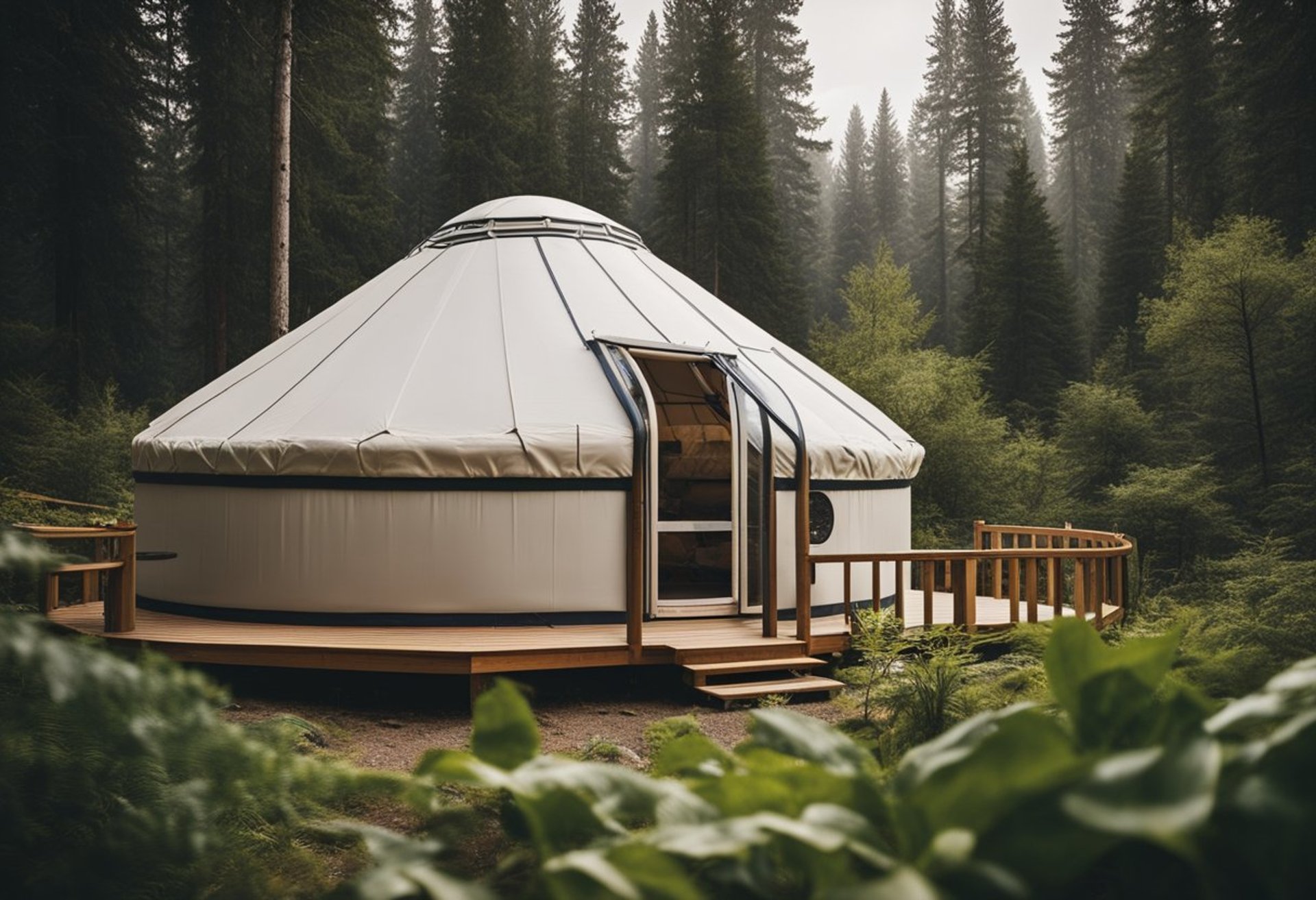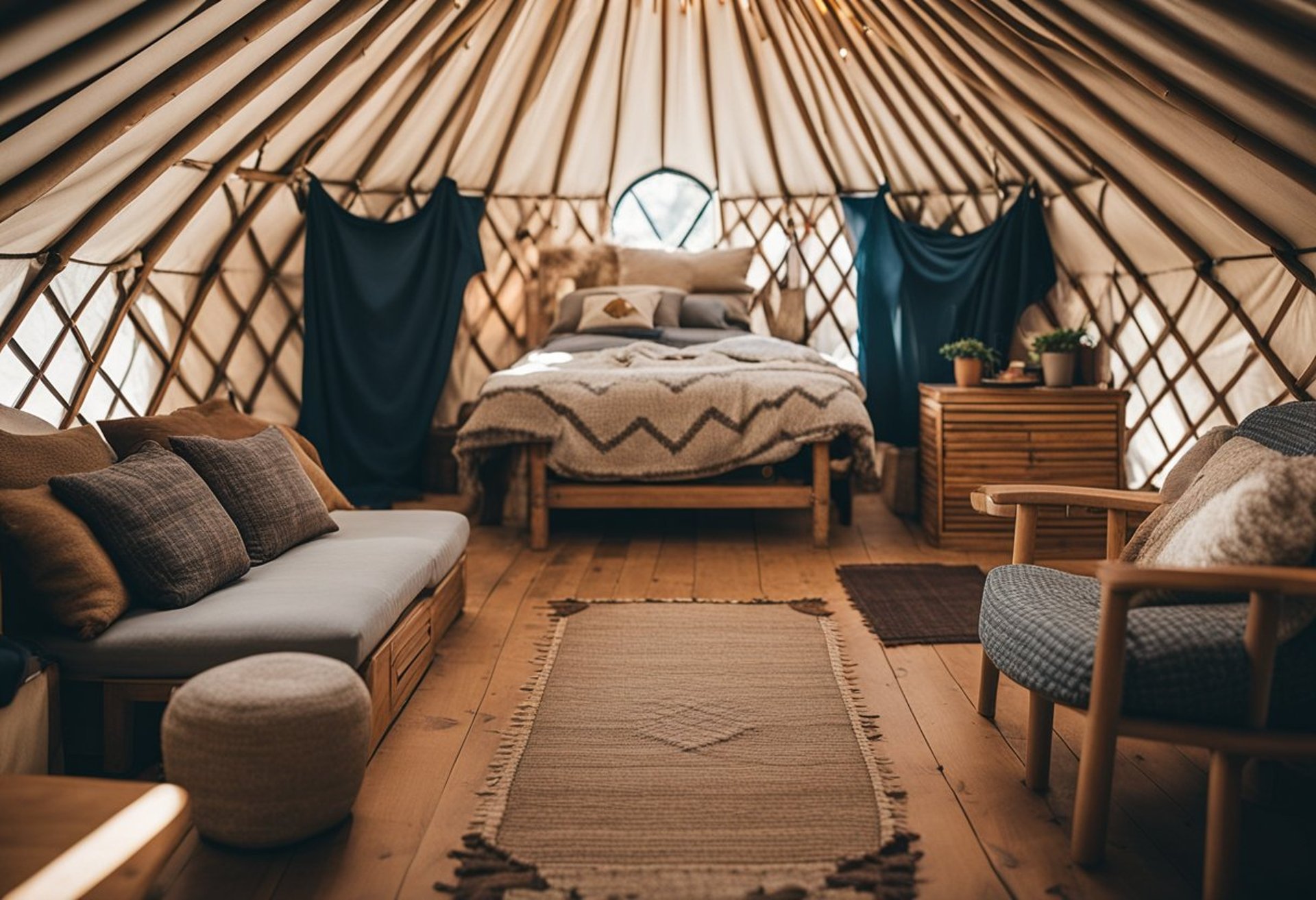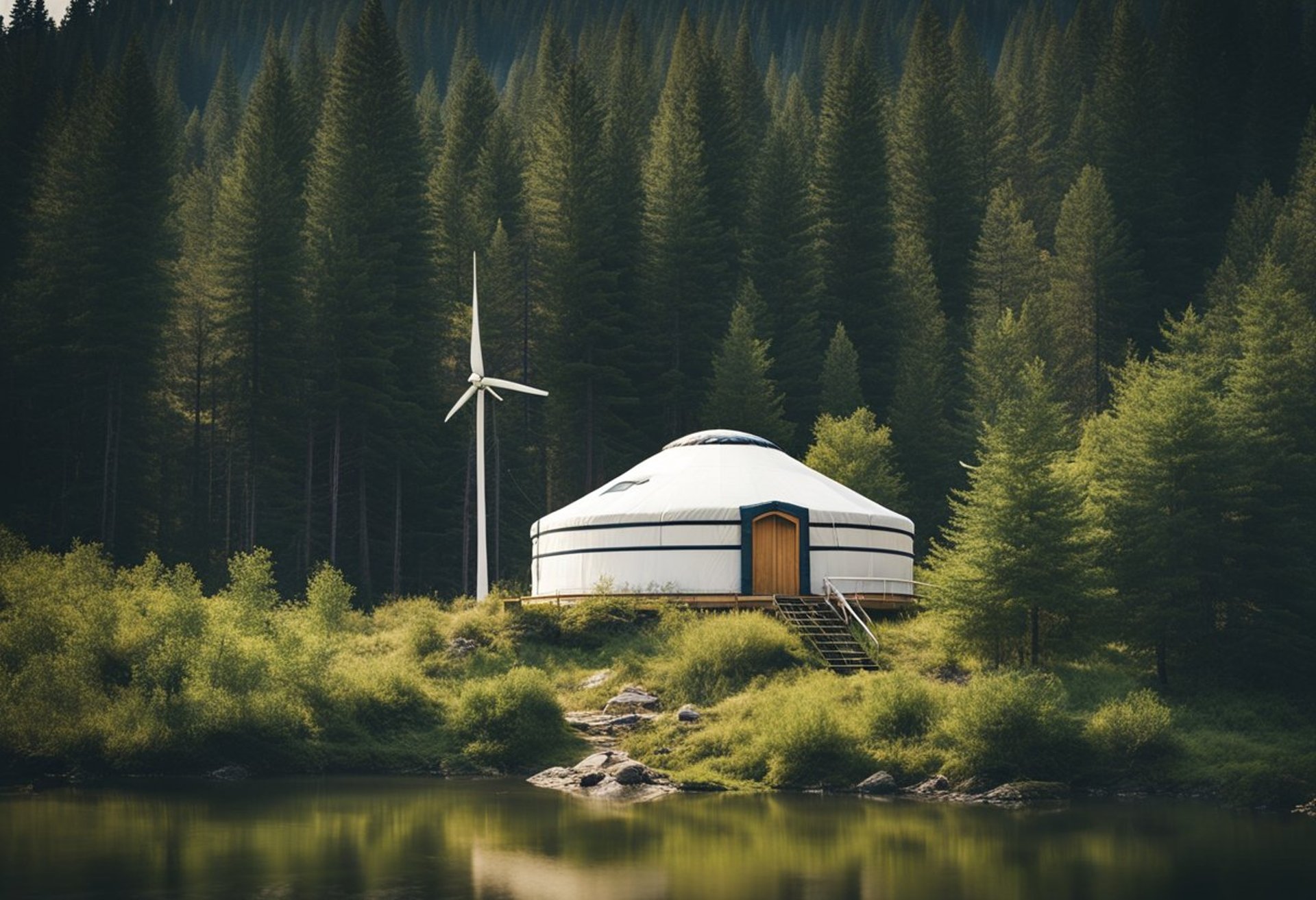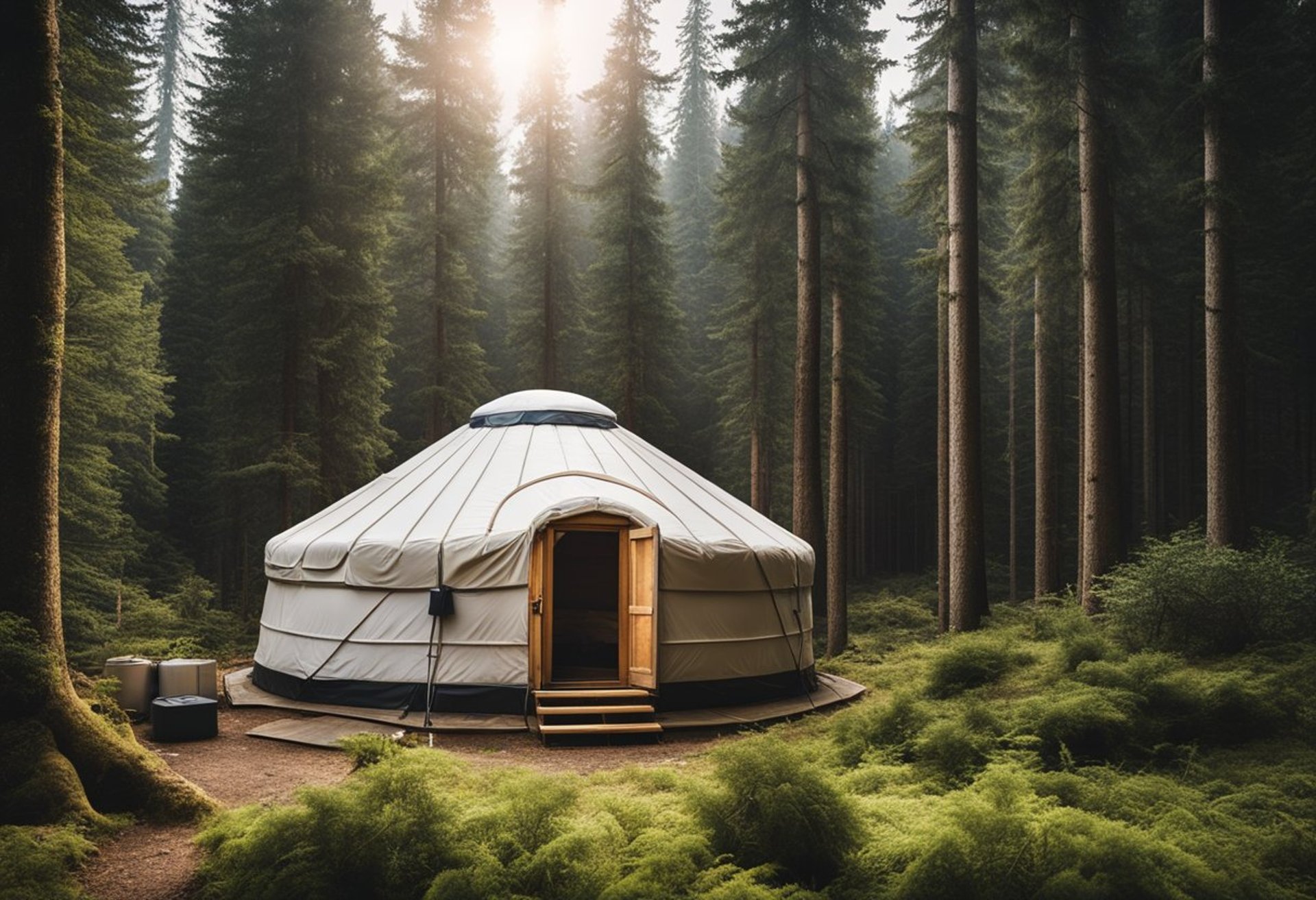Tips for Off-Grid Living in a Yurt: Essential Strategies for Sustainable Living
Tips for Off-Grid Living in a Yurt: Essential Strategies for Sustainable Living
Embracing off-grid living in a yurt offers a unique blend of simplicity and connection to nature. Key strategies for successful yurt life include harnessing renewable energy, maximizing space efficiently, and ensuring access to essential utilities. By understanding the specific needs of yurt living, individuals can create a sustainable and comfortable lifestyle outside the conventional grid.
As yurt life emphasizes minimalism, thoughtful interior design can enhance functionality and comfort. This lifestyle encourages creativity in utilizing limited resources while enjoying the benefits of a close-knit relationship with the environment. The tips outlined here will empower anyone interested in living off-grid to navigate their journey effectively.
Key Takeaways
Renewable energy solutions are essential for yurt living.
Efficient space design maximizes comfort in limited areas.
Embracing simplicity enhances the off-grid lifestyle experience.
Essentials of Off-Grid Yurt Living
Living in a yurt off the grid requires careful consideration of location, design, and resource management. Key elements include selecting a suitable site, understanding how yurts function, and ensuring access to water.
Selecting the Right Location
Choosing the correct location significantly impacts off-grid living. Factors to consider include proximity to resources, climatic conditions, and land accessibility.
Resource Accessibility: Identify nearby water sources, firewood, and food supplies. Proximity to these resources minimizes the need for transport.
Climate: Analyze weather patterns to determine if the location suits yurt living. Snow, rainfall, and wind can affect the yurt's longevity and comfort.
Land Topography: Select flat land to facilitate construction and drainage. Avoid flood-prone areas to protect the yurt from water damage.
Understanding Yurt Design and Structure
Awareness of yurt design is crucial for comfortable off-grid living. Yurts often come in various sizes and materials, each offering distinct benefits.
Insulation: Proper insulation materials, like sheep's wool or eco-friendly foam, enhance energy efficiency. This is essential for heat retention during colder months.
Ventilation: Airflow is necessary to prevent condensation. Install vents and consider a wood-burning stove for both heat and ventilation.
Durability: Using quality materials, such as pressure-treated wood for bases, extends the yurt's lifespan. Ensure that the fabric used for the walls can withstand local weather.
Securing a Sustainable Water Supply
Water access is vital for daily living. Establishing a sustainable supply involves careful planning.
Rainwater Harvesting: Implement systems to collect rainwater through a roof and storage barrels. This method can meet a significant portion of water needs.
Well Drilling: If feasible, drilling a well can provide a reliable water source. Research local regulations and water quality before installation.
Filtration systems: Utilize filters for purification if the water source is not potable. Regular maintenance of water systems ensures continued access to clean water.
Through strategic planning in these areas, off-grid living in a yurt can be both practical and sustainable.
Energy and Utilities for Your Yurt
For effective off-grid living in a yurt, it is essential to consider sustainable energy sources and efficient waste management practices. Utilizing renewable energy can power all aspects of daily life while reducing reliance on external utilities.
Harnessing Solar Power
Solar power is a reliable and popular choice for off-grid living in a yurt. Installing solar panels can generate sufficient electricity to power lights, appliances, and devices. A typical setup may include:
Solar panels: Sized according to energy needs.
Inverters: To convert DC power to AC power.
Batteries: For energy storage to ensure a consistent power supply.
The placement of solar panels is crucial. They should be positioned to maximize sunlight exposure throughout the year. Regular maintenance and cleaning of the panels will enhance efficiency and longevity, ensuring a stable power source.
Other Renewable Energy Sources
In addition to solar power, yurts can utilize wind and micro-hydro energy systems.
Wind Energy: Small wind turbines can complement solar power, particularly in areas with consistent wind.
Micro-hydro systems: These require a water source, such as a stream, to generate power.
Both options may contribute significantly to energy needs, especially during periods when solar power may be insufficient.
A combination of these energy sources can create a robust system. Each renewable source should be assessed based on the specific environment and resource availability.
Waste Management Solutions
Effective waste management is vital in off-grid living. Composting toilets are a popular choice because they minimize water usage and reduce waste.
Consider the following options:
Compost toilets: Decompose waste naturally, reducing the need for plumbing.
Greywater systems: Recycle water from sinks and showers for irrigation.
These methods promote sustainability and reduce environmental impact. In addition, using biodegradable products can significantly lessen waste. Building a compost pile for organic scraps also adds to the ecological footprint by returning nutrients to the soil.
Planning these elements is key to establishing a self-sufficient yurt lifestyle.
Interior Design and Space Maximization
Creating an efficient interior space in a yurt requires careful consideration of furniture and thermal management. Effective use of space and temperature control contributes significantly to off-grid living comfort.
Functional Furniture and Storage
Selecting multifunctional furniture is essential in optimizing limited space. Foldable tables and expandable seating can transform a small area for dining, working, or relaxing.
Storage Solutions:
Under-Bed Storage: Use bins or drawers beneath beds to maximize floor space.
Wall-Mounted Shelves: Install shelves to keep items off the floor while displaying personal touches.
Vertical Storage: Employ hooks and pegboards for tools and gear; this keeps them organized and accessible.
Choosing lightweight, easily movable pieces also enhances flexibility in space usage. Materials like bamboo or recycled wood offer durability while maintaining a rustic aesthetic.
Insulation and Temperature Control
Effective insulation is crucial for maintaining comfortable temperatures in a yurt. Quality insulation materials minimize heat loss in winter and keep interiors cool in summer.
Insulation Options:
Natural Fibers: Options such as sheep's wool or cotton provide warmth and breathability.
Foam Board Insulation: It is effective for thermal resistance and can be fitted into walls or beneath floors.
Additionally, using thermal curtains can help regulate indoor temperatures. Yurt residents should consider installing a wood stove or a propane heater to maintain warmth during colder months.
Proper ventilation is also key to ensuring fresh air circulation, preventing moisture buildup, and enhancing comfort in the living space.
Living the Off-Grid Lifestyle
Engaging in an off-grid lifestyle requires adopting a self-sufficient mindset and fostering community connections. These elements are critical for successfully navigating the challenges that come with living away from conventional systems.
Building a Self-Sufficient Mindset
A self-sufficient mindset is essential for anyone living off-grid in a yurt. This involves embracing resourcefulness and adapting to various challenges.
Practical skills such as gardening, renewable energy management, and home maintenance become crucial. Learning to grow food through permaculture practices can significantly enhance independence.
Handling repairs and creating DIY solutions for common issues also builds confidence. Engaging with local workshops or online tutorials improves these skills.
Mental resilience is equally important. Living off-grid can be isolating at times, so developing coping strategies for solitude and unexpected challenges is valuable. Journaling and mindfulness practices can support mental health.
Community and Networking
Community and networking play vital roles in the off-grid lifestyle. Building relationships with others who share similar values creates a support system.
Local meetups, forums, and social media groups provide a platform for sharing knowledge. These interactions can lead to practical tips and resource exchanges, enhancing overall self-sufficiency.
Volunteering in community projects fosters connections and trust. This involvement can lead to bartering opportunities, where skills or goods can be exchanged without money.
Establishing ties with neighbors also creates a safety net. A collective approach to problem-solving strengthens resilience against common challenges, such as equipment failures or emergencies.
In summary, a blend of self-sufficiency and community ties is key to thriving in an off-grid environment.




